Abstract
Aerobic and anaerobic culture of sputum on selective bacteriological media, combined with a new method of plating and plate reading, permitted rapid identification and quantitation of three genera of bacteria commonly associated with chronic bronchial sepsis (Haemophilus spp, Pseudomonas aeruginosa, and Staphylococcus aureus) and avoided time consuming serial dilution of sputum and subculture of organisms. The accuracy of this new technique was assessed in patients with chronic bronchial sepsis and was used to detect changes in the colonising microbial load of Haemophilus spp and Ps aeruginosa in patients with bronchiectasis receiving one of three different antibiotic regimens: intermittent seven day courses of amoxycillin for exacerbations; or a six month course of continuous oral or nebulised amoxycillin. The colonising microbial load of Haemophilus spp was reduced only temporarily (+++ to ++) after each intermittent course of antibiotic, but a sustained and greater reduction in the colonising microbial load of both Haemophilus spp (+++ to +) and antibiotic resistant P aeruginosa (+++ to +) was seen during both continuous treatments. Sputum purulence decreased in parallel with colonising microbial load, reflecting a reduction in host inflammatory response to the colonising microbial load.
Full text
PDF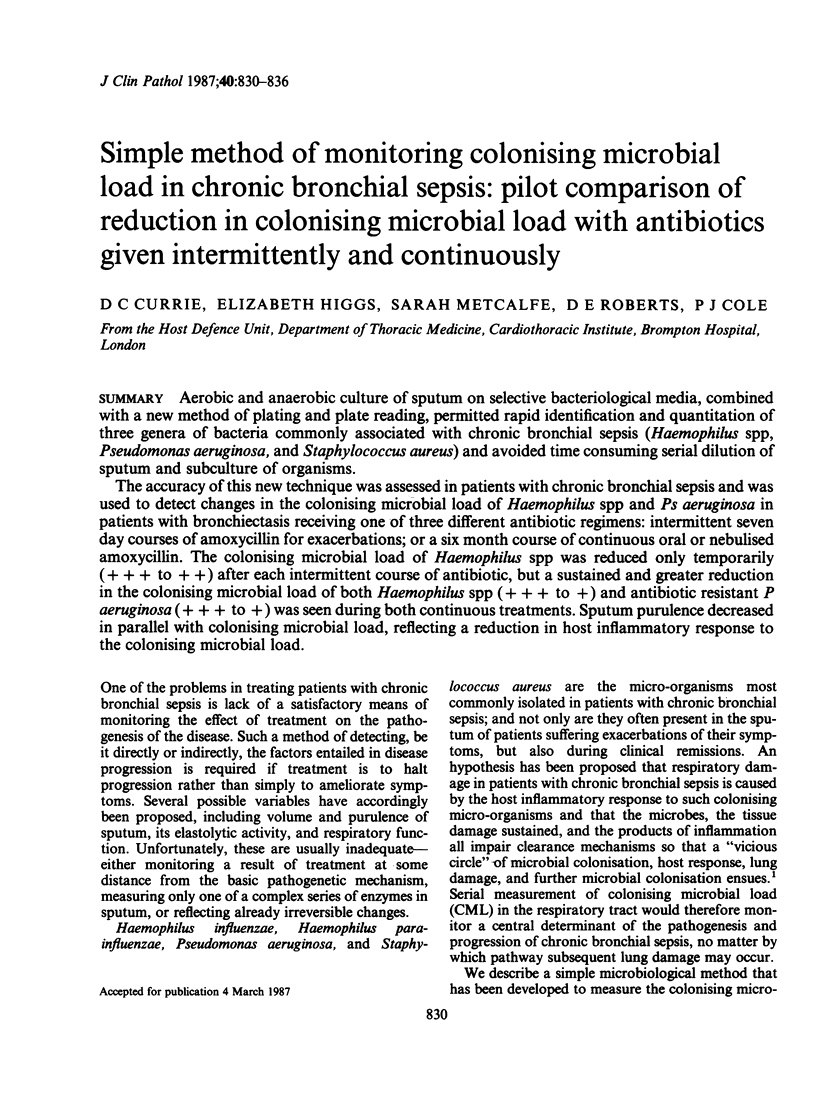
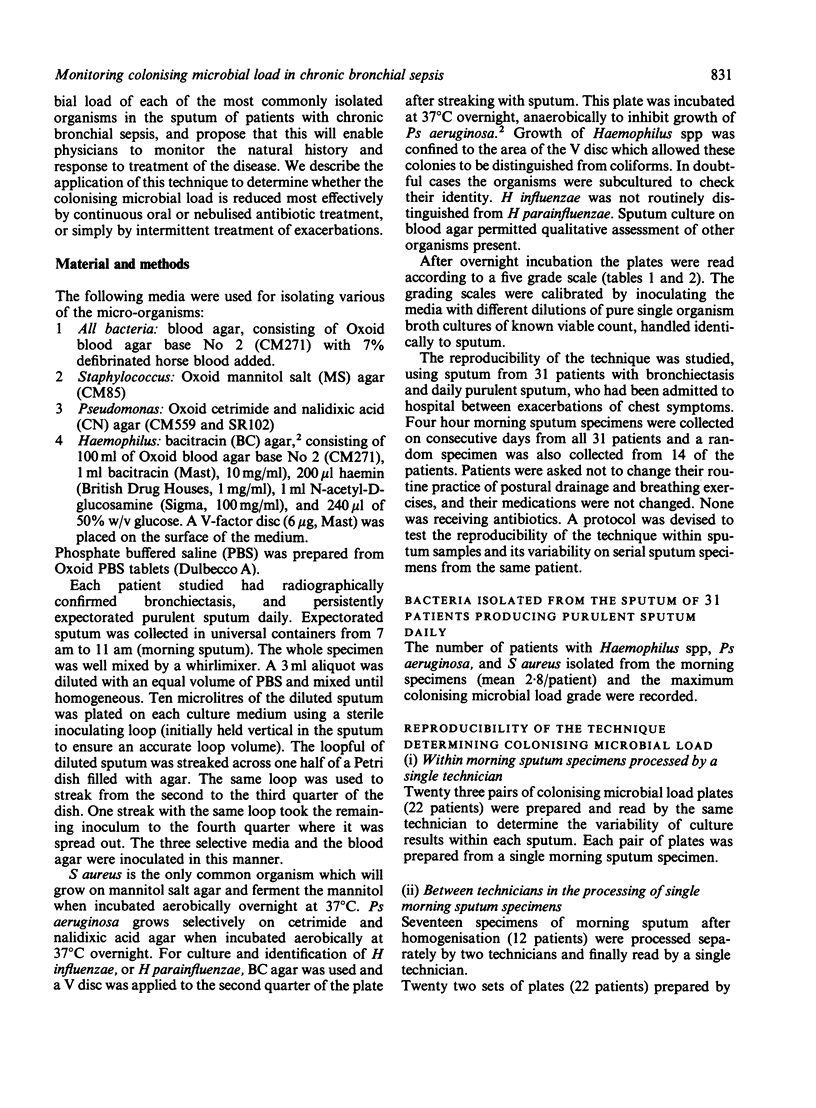
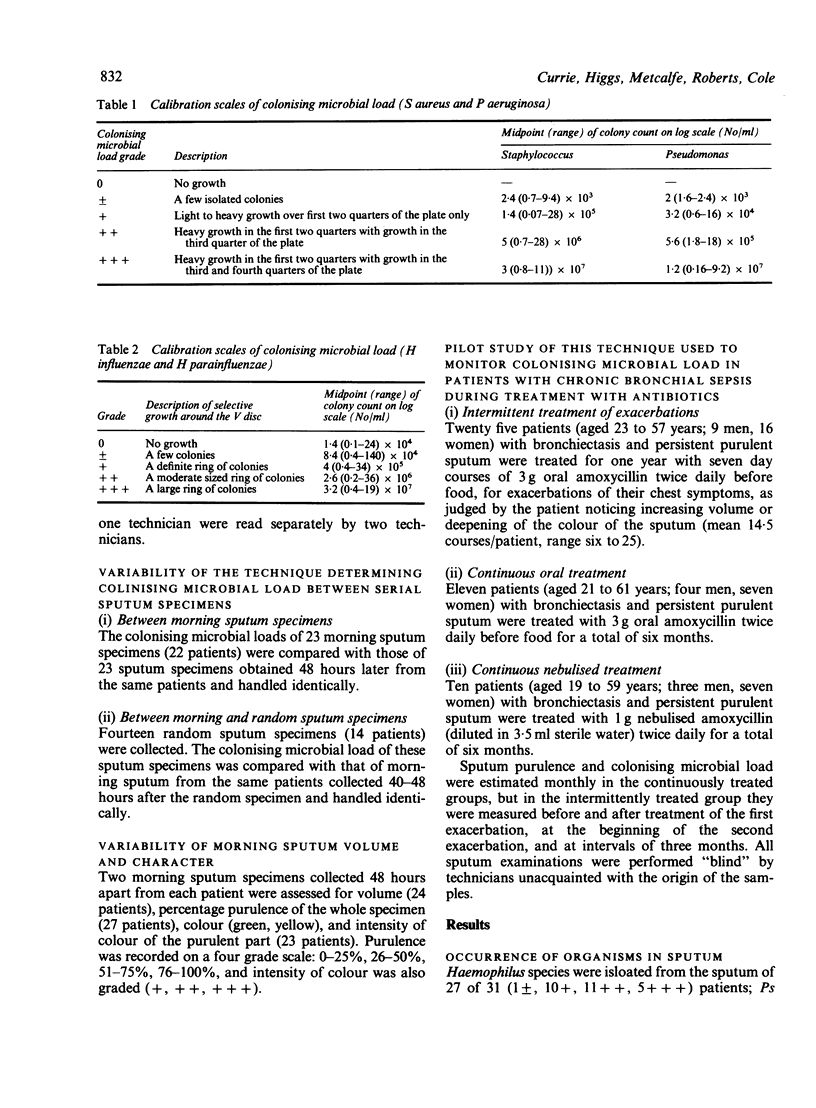
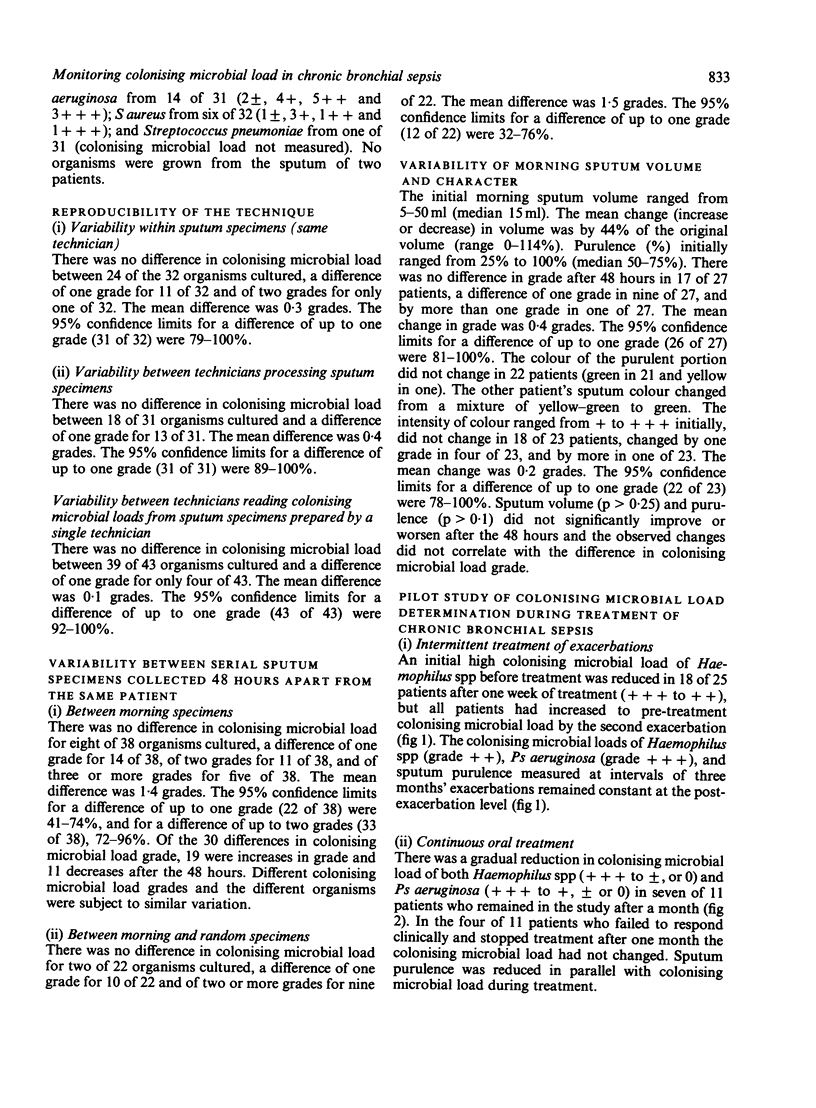
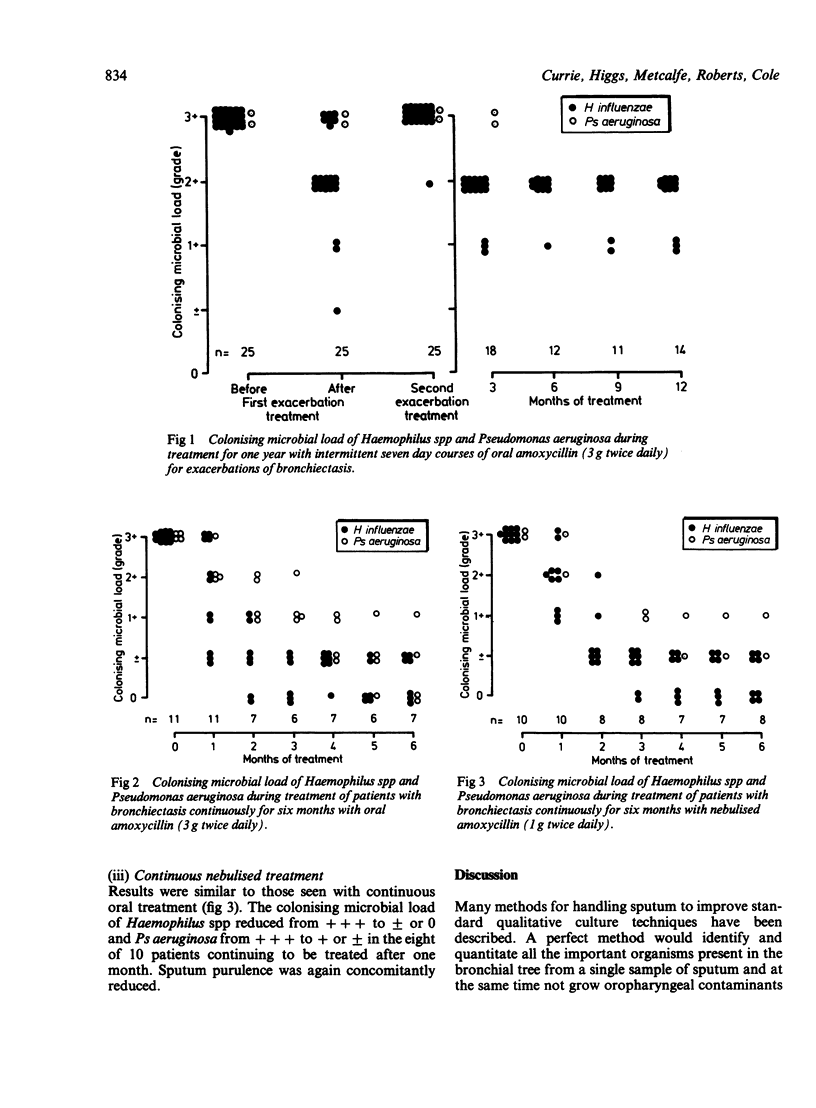
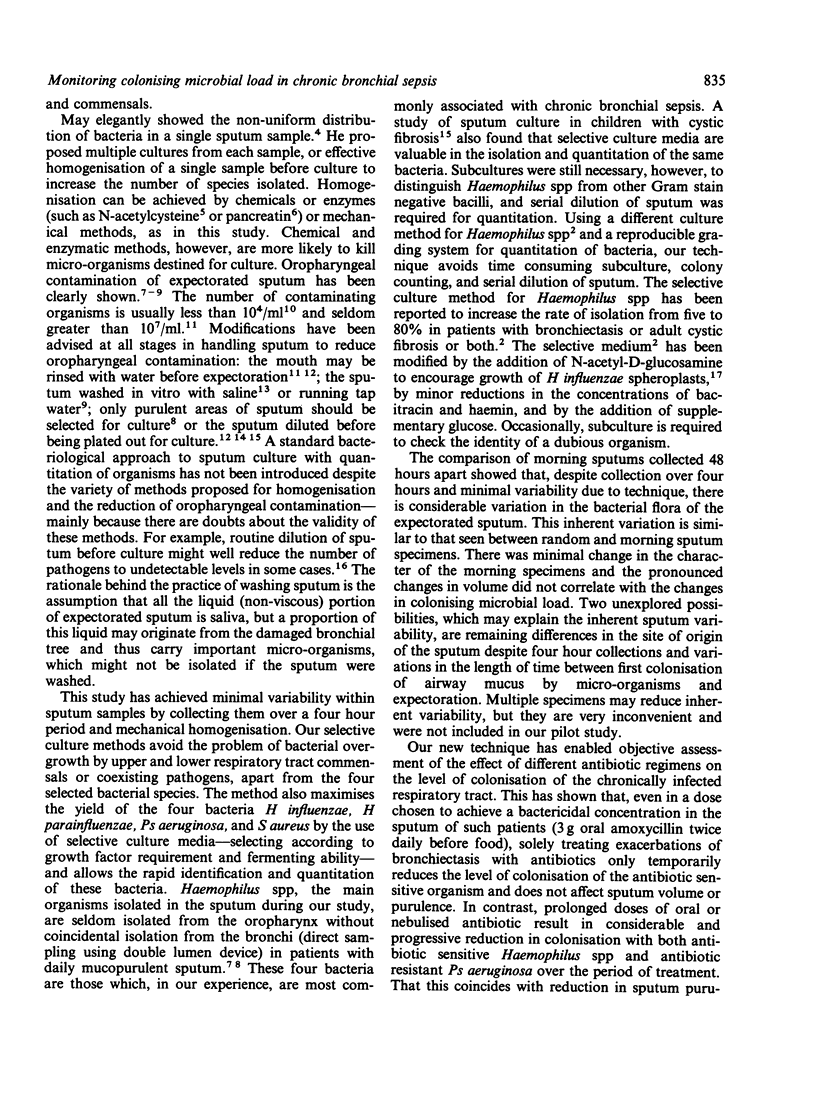
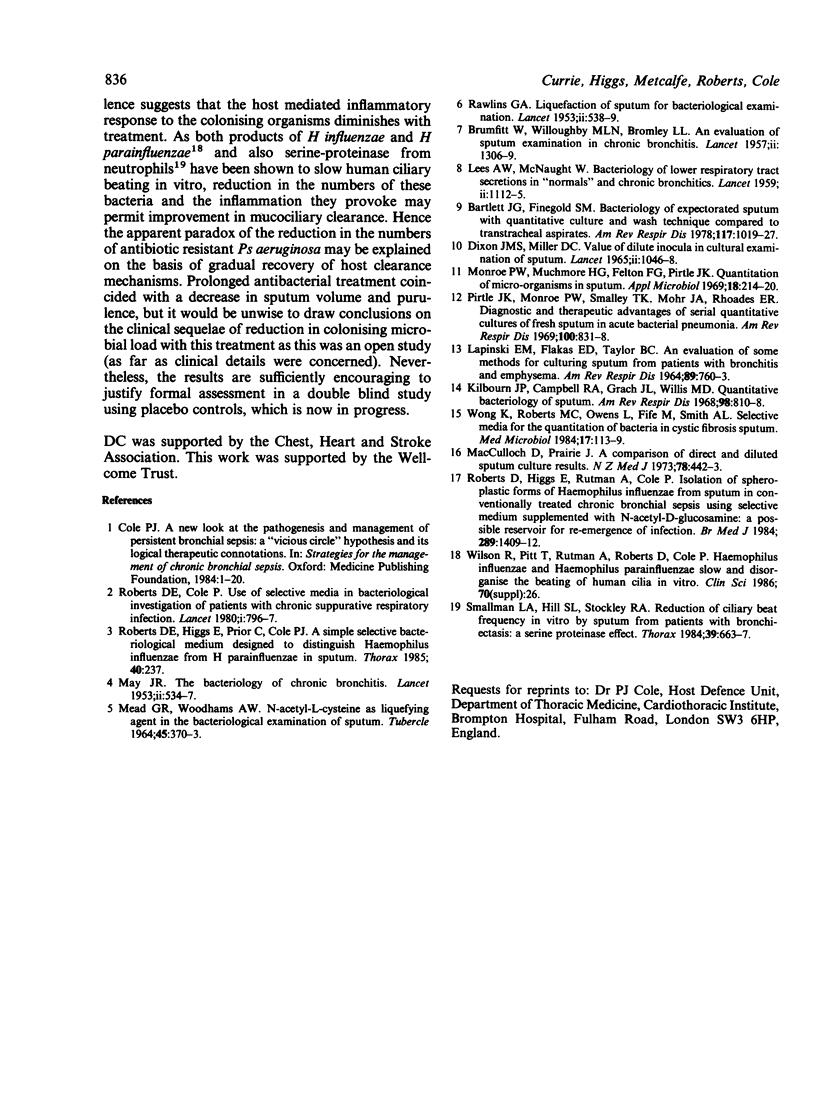
Selected References
These references are in PubMed. This may not be the complete list of references from this article.
- BRUMFITT W., WILLOUGHBY M. L., BROMLEY L. L. An evaluation of sputum examination in chronic bronchitis. Lancet. 1957 Dec 28;273(7009):1306–1309. doi: 10.1016/s0140-6736(57)91637-9. [DOI] [PubMed] [Google Scholar]
- Bartlett J. G., Finegold S. M. Bacteriology of expectorated sputum with quantitative culture and wash technique compared to transtracheal aspirates. Am Rev Respir Dis. 1978 Jun;117(6):1019–1027. doi: 10.1164/arrd.1978.117.6.1019. [DOI] [PubMed] [Google Scholar]
- Dixon J. M., Miller D. C. Value of dilute inocula in cultural examination of sputum. Lancet. 1965 Nov 20;2(7421):1046–1048. doi: 10.1016/s0140-6736(65)90572-6. [DOI] [PubMed] [Google Scholar]
- EDELSTON B. G. Thesaurosis following inhalation of hair spray. Lancet. 1959 Aug 15;2(7094):112–113. doi: 10.1016/s0140-6736(59)92219-6. [DOI] [PubMed] [Google Scholar]
- Kilbourn J. P., Campbell R. A., Grach J. L., Willis M. D. Quantitative bacteriology of sputum. Am Rev Respir Dis. 1968 Nov;98(5):810–818. doi: 10.1164/arrd.1968.98.5.810. [DOI] [PubMed] [Google Scholar]
- LAPINSKI E. M., FLAKAS E. D., TAYLOR B. C. AN EVALUATION OF SOME METHODS FOR CULTURING SPUTUM FROM PATIENTS WITH BRONCHITIS AND EMPHYSEMA. Am Rev Respir Dis. 1964 May;89:760–763. doi: 10.1164/arrd.1964.89.5.760. [DOI] [PubMed] [Google Scholar]
- MAY J. R. The bacteriology of chronic bronchitis. Lancet. 1953 Sep 12;265(6785):534–537. doi: 10.1016/s0140-6736(53)90274-8. [DOI] [PubMed] [Google Scholar]
- MEAD G. R., WOODHAMS A. W. N-ACETYL-L-CYSTEINE AS LIQUEFYING AGENT IN THE BACTERIOLOGICAL EXAMINATION OF SPUTUM. Tubercle. 1964 Dec;45:370–373. doi: 10.1016/s0041-3879(64)80051-9. [DOI] [PubMed] [Google Scholar]
- MacCulloch D., Prairie J. A comparison of direct and diluted sputum culture results. N Z Med J. 1973 Nov 28;78(503):442–443. [PubMed] [Google Scholar]
- Monroe P. W., Muchmore H. G., Felton F. G., Pirtle J. K. Quantitation of microorganisms in sputum. Appl Microbiol. 1969 Aug;18(2):214–220. doi: 10.1128/am.18.2.214-220.1969. [DOI] [PMC free article] [PubMed] [Google Scholar]
- Pirtle J. K., Monroe P. W., Smalley T. K., Mohr J. A., Rhoades E. R. Diagnostic and therapeutic advantages of serial quantitative cultures of fresh sputum in acute bacterial pneumonia. Am Rev Respir Dis. 1969 Dec;100(6):831–838. doi: 10.1164/arrd.1969.100.6.831. [DOI] [PubMed] [Google Scholar]
- RAWLINS G. A. Liquefaction of sputum for bacteriological examination. Lancet. 1953 Sep 12;265(6785):538–539. doi: 10.1016/s0140-6736(53)90275-x. [DOI] [PubMed] [Google Scholar]
- Roberts D. E., Cole P. Use of selective media in bacteriological investigation of patients with chronic suppurative respiratory infection. Lancet. 1980 Apr 12;1(8172):796–797. doi: 10.1016/s0140-6736(80)91295-7. [DOI] [PubMed] [Google Scholar]
- Roberts D., Higgs E., Rutman A., Cole P. Isolation of spheroplastic forms of Haemophilus influenzae from sputum in conventionally treated chronic bronchial sepsis using selective medium supplemented with N-acetyl-D-glucosamine: possible reservoir for re-emergence of infection. Br Med J (Clin Res Ed) 1984 Nov 24;289(6456):1409–1412. doi: 10.1136/bmj.289.6456.1409. [DOI] [PMC free article] [PubMed] [Google Scholar]
- Smallman L. A., Hill S. L., Stockley R. A. Reduction of ciliary beat frequency in vitro by sputum from patients with bronchiectasis: a serine proteinase effect. Thorax. 1984 Sep;39(9):663–667. doi: 10.1136/thx.39.9.663. [DOI] [PMC free article] [PubMed] [Google Scholar]


